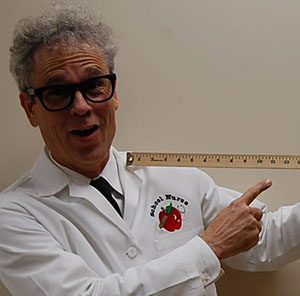 Feb 12, 2020–While serving on yet another committee, I realized how many of my skills were learned in an elementary school classroom. Not as a student, but as the teacher.
Feb 12, 2020–While serving on yet another committee, I realized how many of my skills were learned in an elementary school classroom. Not as a student, but as the teacher.
I consider myself a big picture guy who thinks in generalities. Buckminster Fuller was my muse. However, nothing reinforces the importance of details better than spending an entire day in a room facing 20 4th-graders.
The first revelation from teaching my first class was that every minute of every day must be planned, literally.
It starts the moment the students hit the door. You, the teacher, must be present and acknowledge each one. You take them as they are, and immediately begin transitioning them from whatever chaos they left at home, into the chaos of the classroom.
For every single one of the following 450 minutes in a typical school day, each student needs something to do. This is the key. Say you have a 30-minute lesson. You automatically plan contingencies for those who finish in half that time and those who need twice that long. So one lesson really becomes three lessons, occurring concurrently.
And planning lessons is the easy part. The real minefields are those three minutes between lessons! As any teacher, director, or parent knows, when you ask a kid to switch from one task to another is when you lose them. Transition becomes permission to talk, distract, agitate, squirm, tease Trista, or punch Parker.
Effective teachers employ all kinds of tricks. My favorite was to have a riddle or challenge written on the board. The minute a student walked in the room, they found something they could immediately focus on. (Willie Nelson noted that Bob Wills kept his audience’s attention by simply eliminating all transitions, playing one tune after another.)
With kids, something we take for granted such as lining up to leave the room becomes as challenging as Hannibal crossing the Alps. And like Hannibal’s elephants, children do not forget. They know who was first in line every day since August 21, and woe to the teacher who gives Kendra two turns in a row.
Another obsessive-compulsive behavior every teacher acquires is collecting supplies. Not even a simple activity that requires only pencil and paper is simple in practice. No student ever seems to have either at hand.
(As a first-year teacher I would rant and scold every time a student forgot a pencil. Then a wise teacher pointed out I could simply gather all the pencils left on desks and floor at the end of each day and toss them into a coffee can. Next time a student forgot his pencil, I simply pointed to the can. It was like fishes and loaves, forever replenished.)
Moving up to a craft project? That means gathering bins of paper, scissors, yarn, thread, brads, glue, toilet paper tubes, sequins, and any other ingredient in enough quantity to evenly distribute.
So back to that committee meeting. Someone proposed conducting a survey of audience members at an event. Teacher Me’s mind immediately went to:
-Forms must be printed on card stock so they are easier to write on while standing.
-How will they be distributed so as not to slow down the line?
-What will we use as containers to collect them and where do we place them?
-Pencils! How will we make sure 500 people have a pencil?
Writing this, it comes to me how much of teaching has nothing to do with pedagogy or curriculum. All the preparation, scrounging of materials, and balancing bathroom breaks need to be in place for those magical moments of learning.
One professional speaker said it best: You are not paying me to speak; but you’ll pay me dearly to drive to the airport, stand in line, stay in a hotel, and get to your venue.
I think all teachers would agree that we would teach for free. But we earn our pay wrangling children, scrounging supplies, and managing pencils.